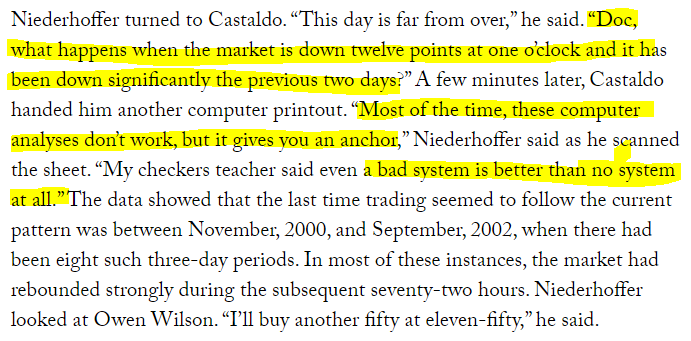While I do recommend that you watch the video for yourself, here is a summary of what she is saying.
There are two ways of looking at the world around us and gathering information. In our context let's say you are looking at the index/markets.
Soldier Mindset - This is a metaphor for people who engage in what is called Motivated Reasoning, meaning - Unconscious emotional drives impacting our decisions instead of reason and facts. People who use this approach consider some ideas as allies and want to hold on to those ideas and other ideas as enemies,and would we want to shoot them down.
Let's say, you follow someone on Twitter and that person says, I think this is the bottom for the day, now you really admire this person (for several reasons), now there are two things possible - He/she is right or He/she is wrong. No issues at all if he/she is right as you know and believe that they are pretty good at predicting the markets. However the problem is, when they are wrong - you would find it very difficult to convince yourself that they may not be that great at predicting. Instead, you may want to give them some benefit, and continue to hold them in high esteem, because that belief in this person is of greater value to you than being curious to check or re-examine your beliefs.
You can also be applying the "Soldier Mindset" to your own self. Let's say you believe in some "Gann numbers" thing. If it works even a little bit, your belief in that system only grows stronger. Now lets say it doesn't work. What you would do is, instead of questioning the rationale behind the system, you may just brush that instance aside or even put your own reading in question - Telling yourself - "Oh may be I don't know Gann system so well. I need to work more on it."
I am sure you get the drift now. It's essentially about holding (unconscious) biases while gathering information and making decisions.
The other side is what she calls the
Scout Mindset - Here the person in question is driven not to make one idea win or other loose, but to see what is there. This person is looking for facts and evidence. He/she is curious and takes pleasure in learning new information, even if it contradicts his/her own belief. In fact, some people with the "Scout Mindset" may seek others who are willing to contradict their ideas. They constantly keep testing their own beliefs. More importantly they are grounded in the sense, their self worth is not tied to them being right or wrong, but instead to finding what is right or wrong.
She also points to the fact that people with "Scout Mindset" make better quality decisions and this mindset does not correlate with IQ. So you could be very intelligent but bad at decision making.
So whats in it for us Scalpers and Traders?
As traders we make multiple decisions and use varied frameworks to understand market structure. Obviously our success depends on making more of right decisions and less of wrong decisions. And if you are developing trader its important that you start with creating and following frameworks which are more evidence based rather than "belief" based. In other words you need to be more of a "Scout" rather than a "Soldier".
So what is it that you could do to develop a "Scout Mindset" as a trader?
- Ask for evidence - Whenever you come across a system or an indicator, always seek evidence in terms of back tests, better still learn to do these yourself. Perhaps learn to code in Python or R.
- Develop co-relational curiosity - Looks for co-relations between different signals/events. If X happens does Y also happen.
- Calculate Probabilities - i.e - Yes if X happens Y also happens, but how often does Y happen? - This would tell you if there is an edge in the co-relational relationship that you found.
- Question Ideas, People and Systems - That's the only way to progress. If you find someone becoming uncomfortable with your questions and becoming defensive, that's a sure sign of a scam.
Unfortunately this is an industry full of snake oil sellers who feed on thousands if not millions of bright eyed suckers who come in everyday, only to loose their hard earned money and more importantly their self-worth. Being a "Scout" is one good way to avoid this eventuality.
I am sure by now you may thinking - All this is fine, but what was that Range, Map and Territory thing? - Well that's for Part 2 of 2



















